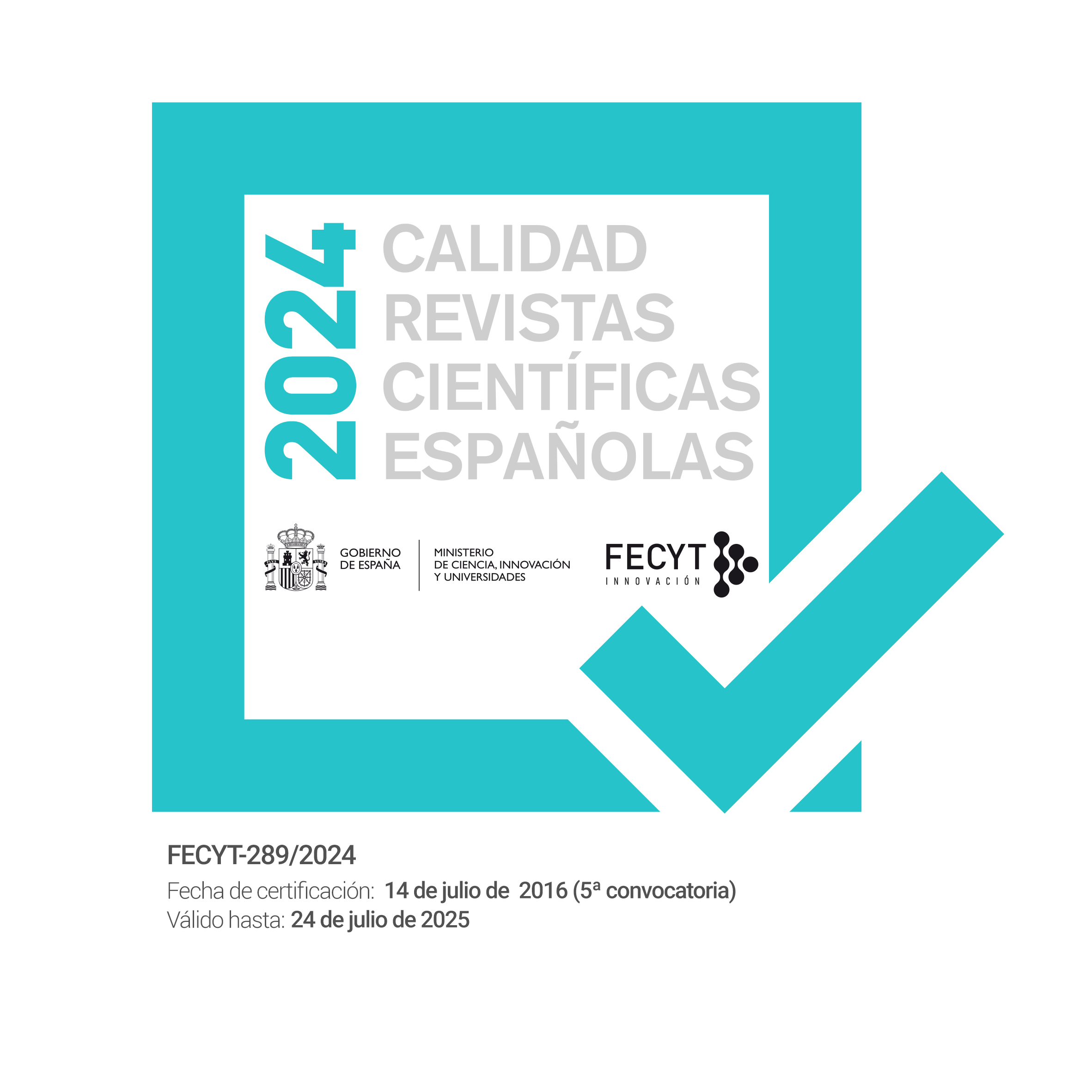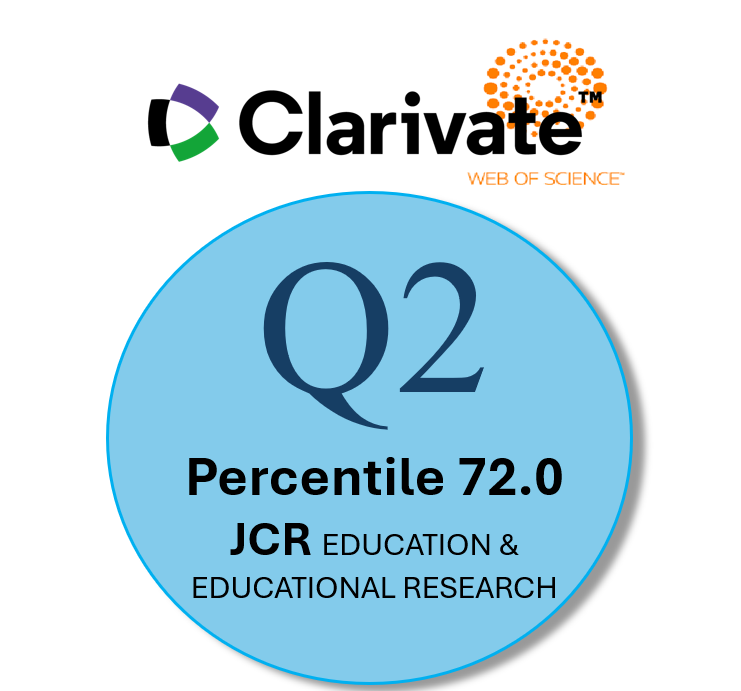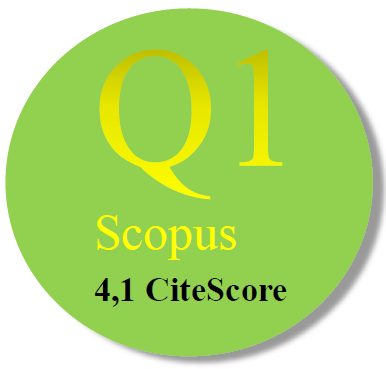Study of videoposters using video annotations as a methodology for scientific events
Abstract
Online scientific meetings motivated by Covid19 have been a very common practice recently. This modality is not new, but today, due to its growth, it requires stable and experienced technological solutions. In one year, much progress has been made in different functions in videoconferencing systems, as well as in new formulas for presenting scientific papers, such as videoposters, which, using emerging video annotation technologies, allow greater interaction and discussion of scientific papers in an online event. The study analyzes the quantity and quality generated by discussions between authors and listeners at a videoposter presentation table versus a face-to-face one. The evaluation of the experiment is performed under a descriptive study of quantitative and qualitative data, and content analysis techniques "Q-analysis" of the 450 annotations and 355 interventions in the 16 videoposters of an online event. We found twice the production of participation in the video-poster modality compared to face-to-face communications, while listing a relevant number of benefits offered by videoposters for the development of online events and professional learning networks.
Downloads
-
Abstract563
-
PDF (Español (España))423
References
Bayram, L. (2012). Use of online video cases in teacher training. Procedia - Social and Behavioral Sciences, 47, 1007-1011. Doi: 10.1016/j.sbspro.2012.06.770
Bolívar-Botía, A. (2015). Un liderazgo pedagógico en una comunidad que aprende. Padres y Maestros, 361, 23–27. https://doi.org/10.14422/pym.i361.y2015.004
Bozdag, A. D. (2008). A new technique for presentation of scientific works: video in póster. World Journal of Surgery, 32(7), 1559-1561. https://doi.org/10.1007/s00268-007-9446-z
Brown, Ch. & Poortman C. L., (Eds.), (2018). Networks for Learning: Effective Collaboration for Teacher, School and System Improvement. London: Routledge.
Buendía Eisman, L., Colás Bravo, P., & Hernández Pina, F. (1998). Métodos de investigación en psicopedagogía. Madrid: McGraw-Hill.
Calandra, B., & Rich, P. J. (2014). Digital video for teacher education: Research and practice. Routledge.
Cogan-Drew, D. (2009). VideoPaper in context: case reports from the field. Technology Pedagogy and Education, 18(3), 299–313. http://doi.org/10.1080/14759390903255585
De Simone, R., Rodrian, J., Osswald, B., Sack, F. U., De Simone, E., & Hagl, S. (2001). Initial experience with a new communication tool: the ‘Digital Interactive Poster Presentation’. European Journal of Cardio-thoracic Surgery, 19(6), 953-955. https://doi.org/10.1016/S1010-7940(01)00694-7
Evi-Colombo, A., Cattaneo, A. & Bétrancourt, M. (2020). Technical and Pedagogical Affordances of Video Annotation: A literature Review. Journal of Educational Multimedia and Hypermedia, 29(3), 193-226. https://www.learntechlib.org/p/215718/
Duarte-Freitas, M.C.D.; Schmid, A. L.; Tavares, S. F. (2014) Estratégia na comunicação científica na forma de vídeo póster. In: Teixeira, Borba. (Org.). Administração, Direito e Tecnologia: a serviço da cidadania. 1ed.Curitiba: Instituto Memoria, v. 1, p. 220-246
Hartmann, S. B. (2017). The Potentials of Using Cloud Computing in Schools: A Systematic Literature Review. The Turkish Online Journal of Educational Technology, 16(1), 190–202. http://www.tojet.net/articles/v16i1/16117.pdf
Hoagg, C. C., Elterman, D. S., & Macneily, A. E. (2006). Abstracts presented at the American Urological Association Annual Meeting determinants of subsequent peer reviewed publication. The Journal of Urology, 176 (6), 2624-2629.
Kalir R & Garcia, A., (2021). Annotation. The MIT Press (ed.). https://mitpress.mit.edu/books/annotation
Ingram, J. (2014). Supporting Student Teachers in Developing and Applying Professional Knowledge with Videoed Events. European Journal of Teacher Education, 37(1), 51-62. http://doi.org/tp7
Kemczinski, A., Cebrián-Robles, D. & Duarte-Freitas, M. (2017). Difusión y colaboración del conocimiento científicos mediante anotaciones en vídeo-póster. Enseñanza de Las Ciencias, 347–354. https://ddd.uab.cat/record/184630
Klieger, A. (2016). The Use of Social Networks to Employ the Wisdom of Crowds for Teaching. TechTrends, 60(2), 124–128. https://doi.org/10.1007/s11528-016-0020-0
Krumsvik, R., & Smith, K. (2009). Videopapers - an attempt to narrow the notorious gap between theory and practice in teacher education. Technology Pedagogy and Education, 18(3), 269–278. http://doi.org/10.1080/14759390903255544
Martínez-Romera, D. & Cebrián-Robles, D. (2019). Análisis videográfico para la evaluación de los aprendizajes en las prácticas externas de la formación inicial de docentes de secundaria. Revista Universitaria de Investigación Educativa, 55(2), 457–477. https://doi.org/10.5565/rev/educar.873
Migliore, M. (2010). A new method for póster presentation: Integrating digital-picture-frame and vídeo player. Ann Ital Chir, 81(1), 63-4.
Monedero-Moya, J.J., Cebrian-Robles, D. & Desenne, Philip. (2015). Usabilidad y satisfacción en herramientas de anotaciones multimedia para MOOC. Comunicar: Revista Científica de Comunicación y Educación, 22(44), 55–62. https://doi.org/10.3916/C44-2015-06.
OCDE (2003). Education at a Glance OECD indicators. https://www.oecd.org/site/worldforum/33703760.pdf
Picci, P., Calvani, A. & Bonaiuti, G. (2012). Teachers’ perspectives on innovation: tutorship and videoannotation. Spring University. Changing Education in a Changing Society. Klaipedos Universitetas, Lithuania.
Powell-Ruck, J., Leach, S., & Maccready, L. (2002). Electronic póster presentations in BAPEN— a controlled evaluation. Clinical Nutrition, 21(3), p. 261-263.
Rich, P. & Hannafin, M. J. (2009). Video annotation tools Technologies to scalfold, structure, and transform teacher reflection. Journal of Teacher of Education, 60 (1), 52-67. doi:10.1177/0022487108328486.
Schleicher, A. (2020). The impact of covid-19 on education insights from education at a glance 2020. OECD. https://cutt.ly/OzKVn2G
Shek, M.MP., Leung, KC. & To, P.YL. (2021). Using a video annotation tool to enhance student-teachers’ reflective practices and communication competence in consultation practices through a collaborative learning community. Education and Information Technologies. https://doi.org/10.1007/s10639-021-10480-9
Smith, B. E., Kiili, C., & Kauppinen, M. (2016). Transmediating argumentation: Students composing across written essays and digital videos in higher education. Computers & Education, 102, 138–151. https://doi.org/10.1016/j.compedu.2016.08.003
Silva, R.; Santos, L. & Duarte-Freitas, M. (2008). Reflexão teórica e conceitual sobre produto informacional e produto de informação. Bento Gonçalves: VIII Seprosul - Semana de Engenharia de Produção SulAmericana.
Tomás, J., & Seidel, T. (2013). The power of video studies in investigating teaching and learning in the classroom BoD – Books on Demand.
Tripp, T. R., & Rich, P. J. (2012). The influence of video analysis on the process of teacher change. Teaching and Teacher Education, 28 (5), 728. Doi: 10.1016/j.tate.2012.01.011
Vangrieken, K., Dochy, F., Raes, E., & Kyndt, E. (2015). Teacher collaboration: A systematic review. Educational Research Review, 15, 17–40. https://doi.org/10.1016/j.edurev.2015.04.002
Copyright (c) 2021 Distance Education Journal

This work is licensed under a Creative Commons Attribution-NonCommercial 4.0 International License.
Las obras que se publican en esta revista están sujetas a los siguientes términos:
1. El Servicio de Publicaciones de la Universidad de Murcia (la editorial) conserva los derechos patrimoniales (copyright) de las obras publicadas, y favorece y permite la reutilización de las mismas bajo la licencia de uso indicada en el punto 2.
2. Las obras se publican en la edición electrónica de la revista bajo una licencia Creative Commons Reconocimiento-NoComercial-SinObraDerivada 3.0 España (texto legal). Se pueden copiar, usar, difundir, transmitir y exponer públicamente, siempre que: i) se cite la autoría y la fuente original de su publicación (revista, editorial y URL de la obra); ii) no se usen para fines comerciales; iii) se mencione la existencia y especificaciones de esta licencia de uso.
3. Condiciones de auto-archivo. Se permite y se anima a los autores a difundir electrónicamente las versiones pre-print (versión antes de ser evaluada) y/o post-print (versión evaluada y aceptada para su publicación) de sus obras antes de su publicación, ya que favorece su circulación y difusión más temprana y con ello un posible aumento en su citación y alcance entre la comunidad académica. Color RoMEO: verde.













